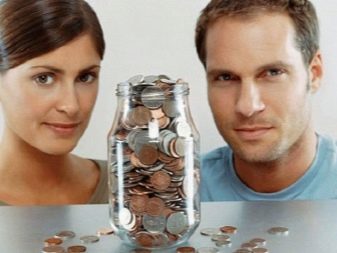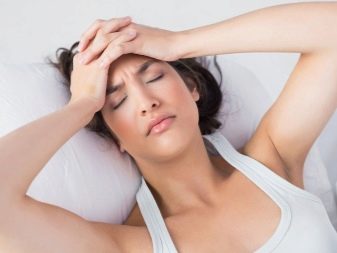Man evolves, changes, and with him change mental disorders. One of the latest listed in the reference books of psychiatrists was shopaholism. At first glance, harmless at first glance - shopping and shopping - can disfigure the life of a person, his family, beyond recognition change his personality.
General information
In the language of physicians and scientists shopaholism is called the beautiful word oniomania. This definition comes from the Greek words "onius" - "for sale" and "mania" - "madness." Thus, the problem is an irrational irresistible desire to buy at least something. In this case, the shopaholic does not ask questions about the feasibility of the purchase, its necessity, he is pleased with the process of making purchases. The positive emotions that accompany him become a kind of drug, addiction develops from them.
As a medical term, the definition of "onymania" was first proposed in history in the 19th century by a psychiatrist from Germany, Emil Crepelin, who with colleagues first drew attention to the strange behavior of some people in shopping centers and shops. Psychiatrists around the world agreed that shopaholism is a mental disorder, and only representatives of the American Psychiatric Association for a long time refused to recognize the excessive painful passion for shopping disease. And only in 2009, American doctors for the first time admitted that the behavior of a shopaholic is identical to the behavior of patients with manic signs.
According to statistics, with the development of large shopping centers and large stores, shopaholism has become almost epidemic. In Germany alone, about a million people suffer from oniomania, in the USA there are about 13 million of such people, in the UK there are about 700 thousand such patients, in Italy, Spain and Scotland up to 40% of women between 15 and 35 suffer from one form or another. oniomania. And the number of shopaholics is growing, because now to get pleasure from shopping you don’t even need to go to the store, all you need is to order everything online.
The consequences of shopaholism are very similar to the effects of alcoholism, drug addiction, gambling. And this means that onyomania cannot be considered a bad habit - it is a mental disorder. Here are just some of the common effects of unstoppable thirst to buy:
- huge personal and family debts (a month’s salary can go away in a matter of minutes);
- the crime of the law is shoplifting, fraud, extortion, prostitution, because a shopaholic in search of resources for shopping is ready for everything, like a drinking person - for a glass of alcohol, and an addict - for a dose of intoxicating substance;
- divorce, family breakdown, personal insecurity and loneliness - and psychology is powerless here.
Shopaholism progresses rapidly, and the pauses between attacks become shorter, and the attacks themselves become stronger. Sooner or later, a person has psychosomatic illnesses, mental illness - depression, neurosis.
Sociologists and doctors have noticed that pandemic outbreaks of oniomania are recorded during periods of holiday promotions and sales. Because of the irresistible craving for purchases, the wife of the famous football player David Beckham Victoria had to pledge her house for debts. Singer Britney Spears became a shopaholic, fleeing depression, which fell during the treatment of drug addiction. Shopping helped her raise her spirits. But not for long.Very soon, great debts were formed, Britney received a severe nervous breakdown and again went to a psychiatric hospital.
Hollywood actress Cameron Diaz - the shopaholic with the experience, she brings purchases home and does not even unpack numerous packages. There is no need for this - the pleasure from the process is gained. Newspaper tycoon William Hearst, who died in 1951, suffered from severe oniomania - he bought completely unnecessary things. The peak was the acquisition “from longing” of the Spanish monastery of the tenth century in Segovia for 40 thousand dollars. To deliver the purchase to the tycoon, I had to disassemble the monastery on the stones, number them and send Hearst along a specially built railway line.
Shopaholism often affects women, while age is not significant. The peculiarity of this mental disorder is that shopaholics themselves proudly admit their weakness, they make themselves victims of addiction and easily demonstrate dependence on others. Alcoholics and drug addicts, it must be admitted, are more modest in demonstrating their passions.
Causes
The reasons that can lead to an unhealthy attitude towards shopping are numerous. Doctors believe that the keystone of this kind of dependence is attention deficit, a feeling of loneliness, and an empty inner void. Shopaholics are in dire need of love and recognition, in implementation. Another common reason pointed out by German specialists is a state of depression. A person can dive into it due to various life circumstances. And at some point it may seem that purchases give a feeling of illusory happiness, so necessary for depressed individuals.
Among other reasons that make an obsessed shopaholic “without brakes” out of the ordinary customer, there are several factors.
- Reduced level of self-control. Enthusiastic personalities often do not know how to stop at the right moment.
- Need for adrenaline surge. A real chemical addiction is produced from this hormone, and the more often a person “catches” adrenaline, the higher the need for it. Buying is a mini-stress, and it is also accompanied by an increased level of certain hormones.
- The illusion of omnipotence and power. Notice how shopaholics choose purchases - they don't just take things, they take things that can be conditional symbols of power. In addition, at the time of purchase, sellers treat the buyer obligingly, praise him, respect and flatter him - in such an environment it is easy to feel like a more significant person.
- The illusion of freedom. The shopaholic respects himself, he has the illusion of choice, freedom of choice. It is especially nice when he acquires not what is needed, but what “just wanted”.
The prerequisites that lead to the development of oniomania are also numerous. These are features of upbringing in childhood, and relationships with peers in adolescence, and personal experience of love relationships. Quite often, shopaholics are people whose parents saved everything habitually - they break personal stereotypes, and wrong attitudes, borrowed from youth that “fashionable clothes make you more popular and desirable,” “money decides everything,” allow you to compensate for failures in personal life, childlessness, a failed career.
It should be noted and the social factor - we literally impose buying: advertising, promotions, sales and discounts for impressionable and unhappy people in their own way with large internal emptiness is a vent, and for entrepreneurs it is only a means of enrichment. Advertising is intrusive on the psyche, indicating not only that the purchase will make a person happier, more successful, give him status, but also dictates and shapes tastes. This is a massive manipulation, but many do not realize the simple truth - our consciousness is mercilessly manipulated.Advertising promises to improve well-being, life, appearance, success and recognition. Only one thing is needed - to buy, and all problems will be solved.
This leaves an imprint in the subconscious, and in some cases leads to the fact that the pathological need to "solve problems" develops in this way.
Symptoms
How to distinguish a shopaholic from an ordinary lover of shopping - the question is obvious and predictable. Make it easy, because for a dependent person is characterized by manic acts. A shopaholic can:
- to go to the store just like that, without a goal, without a clear articulated desire to buy something concrete;
- A shopaholic spends a lot of time in the store, until he looks around, tries on, feels most of the goods presented, he will not calm down;
- when the choice is made, a true shopaholic will not be able to answer the question, for whatever reason, by what criteria, he chose what he chose, he simply does not have any objective valid reason for such a choice;
- onyomans can study fashion magazines with great interest for a long time, while an ordinary person can just have a quick look at such publications;
- A dependent person after purchase may spend hours and even several days discuss his purchase with others;
- if there is no opportunity to get into the store or make a purchase, the addict falls into a depressive state, characterized mainly by apathy - everything loses its meaning, nothing is interesting;
- addicts who are addicted to shopping do not know how to save, they sometimes spend money to the last penny without thinking about how they will live on.
After a day of shopping, when the euphoria passes, a shopaholic may regret buying, spare money spent on an unnecessary purchase, and reprimand that there will be no more. But the need for adrenaline soon makes itself felt again, and again the shopping cycle takes place in a state resembling a trance. When negative consequences come - debts, divorce, condemnation, rejection by relatives, the addict begins to experience signs of personality destruction. He falls into aggression, which is replaced by apathy, sleep is disturbed, there are problems with blood pressure, headaches, sleep disorders, obsessive ideas, hallucinations are possible.
Oniomany are different, but the division is very conditional. The final of such a story with any type will be one - loneliness, illness, dependence on alcohol or psychotropic substances, debts, ruined life. So, conditionally dependent can be divided into several categories.
- Conscious Shopaholic - he understands the problem, does not deny that he is acting illogically, mistakenly, he is well aware of the possible consequences, but also knows that he will not be able to cope with the next attack of mania. Often uses weakness to relieve tension, fatigue, finds an excuse.
- Spontaneous shopaholic - trying to control himself, even shopping lists can make. But still pick up too much, justifying their actions with stocks, discounts, sales.
- Purposeful Shopaholic - does not have an adequate perception of his problem, does not recognize it. Denies the consequences, perceives criticism as an expression of hostility. He spends everything up to a penny, cannot justify after an attack, why, in general, he went to the store, what he bought, how much, and why he did it.
- True shopaholic - he buys for the sake of purchase, sometimes without fitting, things do not suit him in size, but this does not confuse. The further fate of acquired good is uninteresting. What is important is the acquisition process.
- Latent shopaholic - a person does not recognize himself as such, he always plans to buy, and takes only what he has planned, but in huge quantities, exceeding reasonable boundaries several times. They always have an excuse for this - there was an action “buy 10 for the price of 1” or “the prices were so lowered that they decided to take the future”.
Whatever the type of dependent, the cyclical nature of his attacks and key features develop according to the same scenario.Without treatment and timely help, the consequences can be disastrous.
Treatment methods
It is possible to get rid of oniomania, and the problem is solved in the same way as most other behavioral problems. First of all, you need to understand that shopaholism is not just a bad habit, it is a disease, and therefore it’s impossible to simply stop shopping and buy everything you liked. A person cannot stop being ill at will. First you need to believe a word - it is a disease, and it should be treated. Having understood this, it is not necessary to look for excuses, but to turn to a specialist who can prescribe an adequate treatment - a psychiatrist or psychotherapist.
For the treatment of shopaholism using various methods of psychotherapy. The doctor can determine the circumstances in which the desire to go shopping occurs most often. Further work with the patient will be aimed at the point of exclusion of the causes that most often lead to failure.
To cope with the problem quickly will not work, have to fight for quite some time. At the second stage, the psychotherapist creates new, correct attitudes so that a person can change his view on the process of making a purchase as a whole.
At this stage, it is important to break the chain of failures and find that a variety of things in the world can give a feeling of happiness - friendship, sports, hobbies, an interesting journey.
Psychotherapy without fail involves work with the sensual sphere - it is important to reduce the influence of guilt feelings, fear of loneliness, a person must learn to live properly and negative feelings.
At this stage, medication support of the psychotherapeutic course is sometimes required - antidepressants, sleeping pills to normalize sleep, and sedatives. But medications will be understood only when their reception is combined with psychotherapeutic treatment. It is impossible in principle to overcome onyonia with drugs alone.
At the rehabilitation stage, it is important for a person to attend a support group, learn how to properly and accurately plan their time, their budget, especially its expenditure side. If a person has the motivation to get rid of shopaholism, he will be able, the forecasts are favorable.
Prevention of disorder includes some simple, inherently, tips, take note that is worth all buyers, because the potential shopaholic lives in each of us.
- Always plan your purchases - whether it is a large purchase or household "trifle." In advance study the market, look at models, the prices, the range. Well imagine what you want to buy. Try to find at least two places where such goods are offered cheaper than the original price. It takes time, and it will help to avoid spontaneous purchases. Having planned to buy something, do not even try to justify in your thoughts the opportunity to buy in addition some kind of accessory to the main purchase. Need an accessory - buy it later, coming to the choice on the same principle.
- Remember that the action and discount is not a reason to make a purchase. Because the goods suddenly fell, it did not become more necessary for you.
- Do not make purchases for the future - there is a high probability that the thing never comes in handy.
- "New collection" - This is a concept from which, in general, you need to stay away. This automatically means high prices. If you want exactly the thing from the new collection, wait a bit, in a month this collection will participate in the sale.
- Stop using credit cards. It is convenient to borrow. But it is precisely this opportunity that contributes to the development of dependence. Paying by debit card or cash only will help you better understand how much you spend and how much you have left.
- Do not charge large amounts when leaving the house. Limit yourself to a minimum - on travel, for lunch, on food for dinner. So there will be no temptation to urgently buy the dress you like from the shop window you went by.
Experts also advise to take into account all costs and revenues.

























